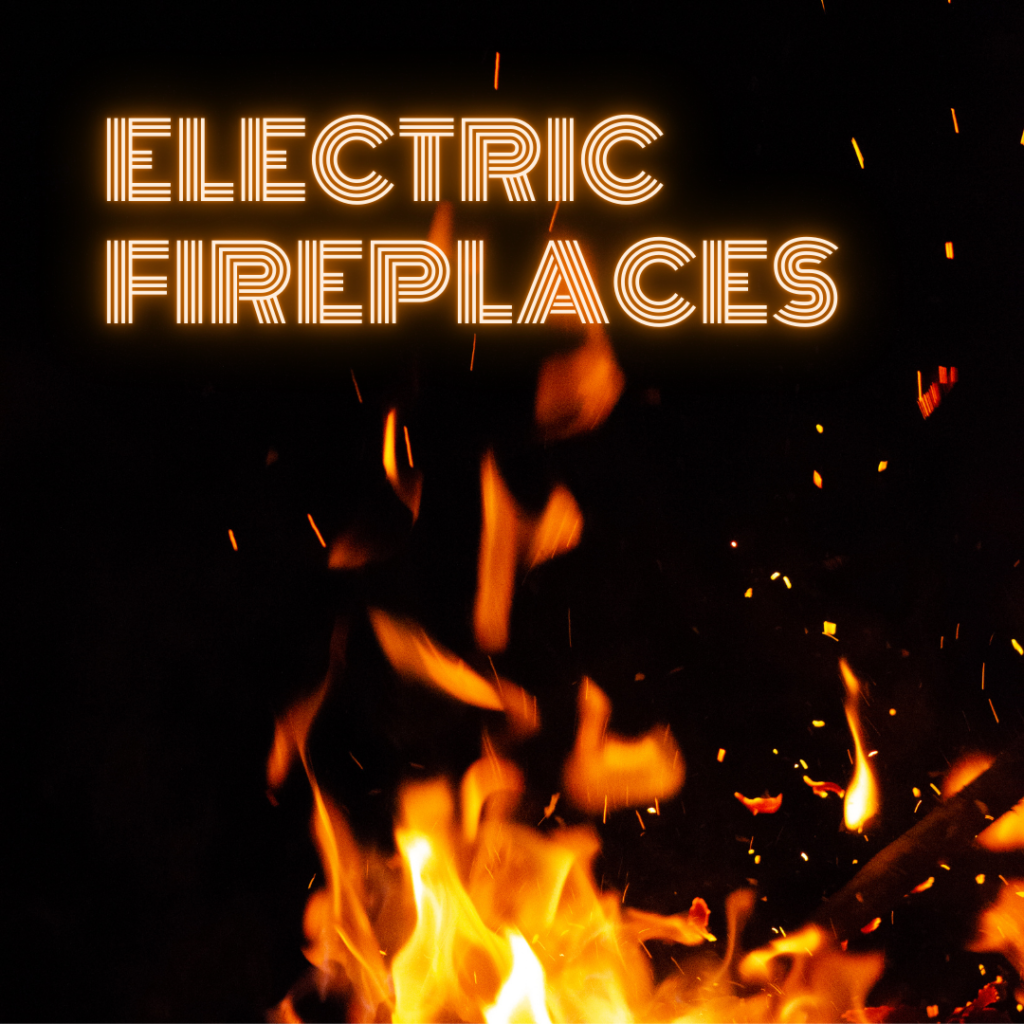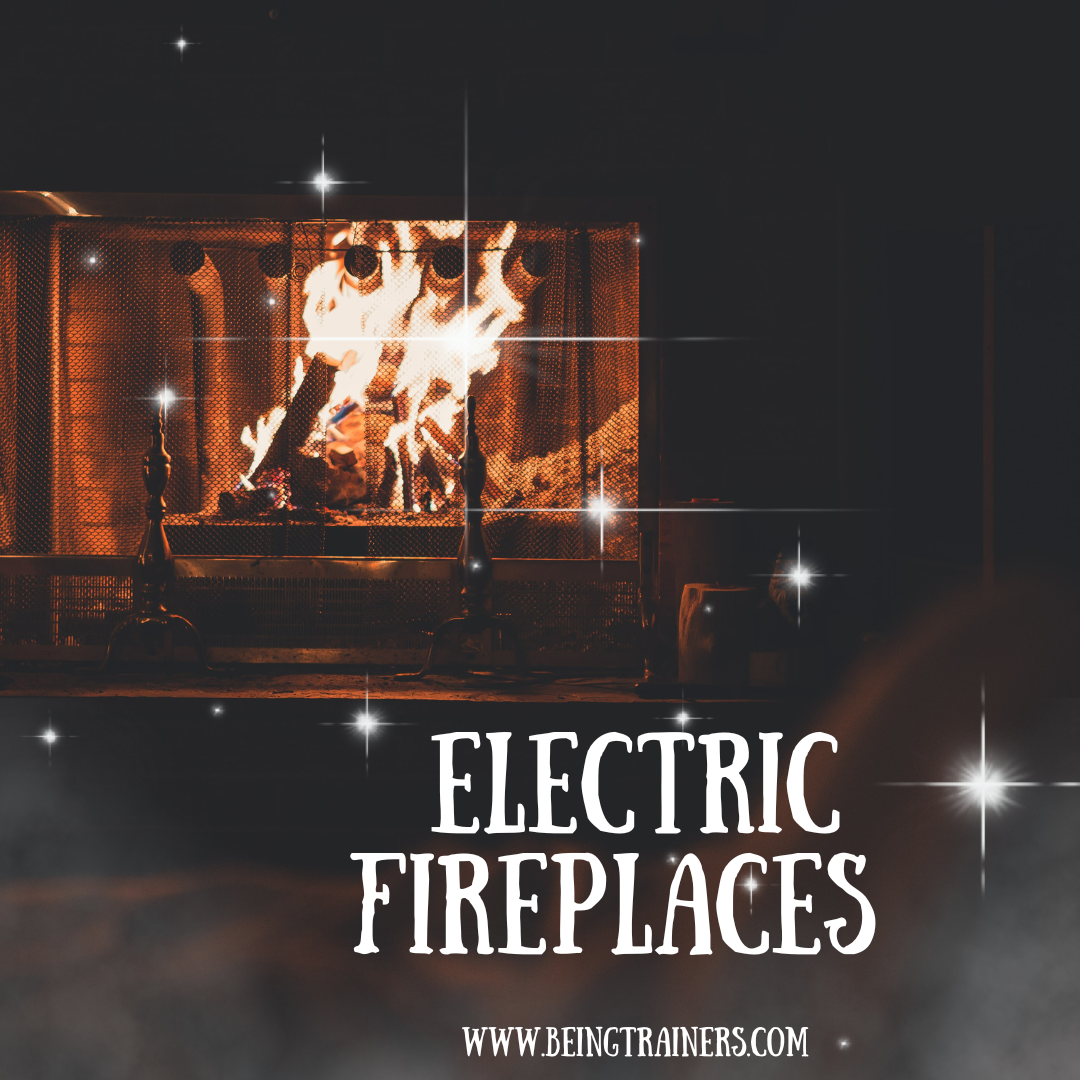Overview of Electric Fireplaces
Electric fireplaces are becoming more and more common as substitutes for conventional wood or gas fireplaces, giving homeowners a practical and adaptable option to warm and cozy up their living areas. These cutting-edge appliances mimic the appearance and sensation of a genuine fire without requiring expensive installation or venting. We’ll go over the principles of electric fireplaces in this introduction, including their appearance, usability, and consumer appeal. People may appreciate the benefits of electric fireplaces and think about incorporating them into their homes as effective heating options and eye-catching focus points by being aware of the fundamental ideas underlying them.
2. Elements of an Electric Hearth
Warmth and aesthetic appeal are produced by the cooperative efforts of multiple essential parts found in electric fireplaces. It is necessary to understand these elements in order to understand how electric fireplaces work. The heater, the flame effect device, and the mantel are the main components. The heating unit provides warmth, the flame effect mechanism creates the appearance of flames, and the mantel houses the fireplace and adds aesthetic appeal. Each component has a specific function. People can learn more about the technology underlying these contemporary heating options and acquire insight into the inner workings of electric fireplaces by exploring the subtleties of these components.
3. How Heat Is Produced by Electric Fireplaces
Heating Systems:
- Talk about the various heating systems that are frequently found in electric fireplaces, such as ceramic heating elements, infrared quartz elements, and fan-forced heaters.
- Describe the operation of each system that produces and distributes heat across the space.
Efficiency and Heat Output:
- Examine how the size and model of an electric fireplace affects its heat output capabilities.
- Talk about how much less energy-intensive electric fireplaces are than conventional wood or gas fireplaces.
Control of Thermostat:
- Explain how thermostat controls are a common feature of electric fireplaces, enabling users to adjust the temperature to their preferred level for maximum comfort.
- Describe how these controls aid in controlling the fireplace’s energy and heat output.
3. How Heat Is Produced by Electric Fireplaces

Mechanisms of Heating:
- Electric fireplaces use a variety of methods, including ceramic heating elements, infrared quartz elements, and fan-forced heaters.
- These devices generate heat and efficiently distribute it throughout the space.
Efficiency and Heat Output:
- The amount of heat output that electric fireplaces provide varies based on the size and model parameters.
- They are renowned for using less energy to provide warmth, eliminating the need for chimney or vent cleaning.
Controlling the Thermostat:
- A lot of electric fireplaces have thermostat controls, which let owners adjust the temperature to their preferred level.
- Precise temperature control is made possible by thermostat controls, which enhance comfort and save energy consumption.
5. Installation and Positioning Points to Remember
Evaluation of Space:
- To make sure the electric fireplace fits properly, measure the available area.
- Take into account elements like the size, design, and furniture placement in the space.
Accessibility of Power Sources:
- Ascertain the ease of access for installation and the distance from electrical outlets.
- If there are not enough outlets, make plans for any additional electrical cabling that may be required or adjustments.
Conditions for Ventilation:
- Ventilation systems are not necessary for electric fireplaces, in contrast to traditional fireplaces.
- To ensure that there is enough airflow surrounding the unit, choose a spot that is free of obstacles.
A safety clearance
- To avoid overheating and to guarantee safety, give the electric fireplace some space around it.
- The manufacturer’s instructions should be consulted for suggested clearance distances.
Freestanding vs. Wall Mounted:
- Choose if you want to install the electric fireplace on the wall or use a freestanding model.
- Consider space limitations, room aesthetics, and personal preferences when making this decision.
Considerations for Installation and Placement
An electric fireplace’s efficacy and safety can be maximized with careful installation and positioning. Make sure the room is large enough to fit the fireplace’s size and provide enough clearance before installing it.
Access to a power source is imperative for electric fireplaces to function since they require energy. Though ventilation systems are usually not necessary for electric fireplaces, take that into consideration as well. Make that the location, whether freestanding or wall-mounted, complies with safety regulations and permits adequate airflow. Homeowners may ensure maximum usefulness and safety in their living space while creating a warm and inviting atmosphere by strategically planning the installation and placement of an electric fireplace.
7. Safety Features of Electric Fireplaces
| Safety Feature | Description |
| Cool-Touch Exterior | Exterior surfaces remain cool to the touch, minimizing the risk of burns, especially for children and pets. |
| Overheat Protection | Built-in sensors automatically shut off the fireplace if it detects overheating, preventing fire hazards. |
| Tip-Over Protection | Some models feature sensors that automatically power off the fireplace if it tips over, reducing the risk of accidents. |
| Automatic Shut-Off Timer | Allows users to set a timer for the fireplace to automatically turn off after a specified period, promoting energy efficiency and safety. |
| Certification Standards | Look for electric fireplaces certified by safety organizations such as UL (Underwriters Laboratories) for compliance with safety standards. |
8. Maintenance and Care Tips
Regular Cleaning:
- Discuss the importance of regularly cleaning the exterior surfaces of the electric fireplace to remove dust, dirt, and debris.
- Provide guidance on using a soft cloth or vacuum with a brush attachment to clean the mantel, glass front, and other visible areas.
Checking Electrical Components:
- Advise users to periodically inspect electrical components such as cords, plugs, and outlets for signs of wear or damage.
- Emphasize the importance of addressing any issues promptly to prevent safety hazards.
Changing Bulbs and Elements:
- Explain how to replace bulbs or heating elements as needed, following manufacturer instructions for the specific model of the electric fireplace.
- Highlight the importance of using compatible replacement parts to ensure proper functionality.
Testing Safety Features:
- Encourage users to regularly test safety features such as the automatic shut-off timer, overheat protection, and tip-over protection.
- Provide instructions on how to perform these tests and what to do if any safety feature fails to function correctly.
Professional Inspection:
- Suggest scheduling periodic professional inspections or maintenance checks for the electric fireplace, especially if it experiences frequent use.
- Highlight the benefits of professional servicing in identifying and addressing potential issues early on.
Customization and Additional Features
Adjustable Flame Settings:
- Explain how electric fireplaces often offer adjustable flame settings, allowing users to control flame intensity, color, and speed.
- Discuss the versatility of these settings in creating different ambiance effects to suit various preferences and occasions.
Temperature Control:
- Describe temperature control options available in electric fireplaces, such as thermostats or heat output settings.
- Highlight the convenience of being able to adjust the heat output to maintain a comfortable room temperature.
Remote Operation:
- Discuss the convenience of remote operation features, allowing users to control the electric fireplace from a distance.
- Explain how remote controls enable easy adjustment of flame settings, temperature, and other functions without needing to approach the fireplace directly.
Sound Effects:
- Mention how some electric fireplaces offer optional sound effects, such as crackling logs or soothing nature sounds, to enhance the realism of the fireplace experience.
- Explore how sound effects contribute to creating a cozy and immersive ambiance.
Decorative Enhancements:
Explore additional decorative features, such as interchangeable media options (logs, crystals, pebbles) and customizable mantel designs.
Discuss how these enhancements allow users to personalize their electric fireplace to complement their home decor and style preferences.
In summary
Electric fireplaces are a popular option for homeowners looking to add warmth and ambience to their house without the trouble of traditional fireplaces because of its many advantages, which include easy installation and adjustable features. Users can take advantage of electric fireplaces’ safe and effective functioning by being aware of their parts, safety features, and upkeep needs. The ability to remotely operate the fireplace, change the temperature, and modify the flame settings increases convenience and comfort. Electric fireplaces may be fashionable and useful additions to any living area, providing warm, inviting atmosphere and warmth for many years to come, with the right maintenance.
Frequently Asked Questions (FAQs)
Are electric fireplaces energy-efficient?
Yes, electric fireplaces are energy-efficient.
Can electric fireplaces be used for heating?
Yes, they can provide heat.
Do electric fireplaces require ventilation?
Ventilation is not required.
Are electric fireplaces safe to use?
Yes, design them for safety.
How do I install an electric fireplace?
Follow the manufacturer’s instructions.
Can I customize flame settings?
Yes, many electric fireplaces offer customization.
Do electric fireplaces require maintenance?
Yes, it is recommended to perform regular maintenance.
Are electric fireplaces suitable for all spaces?
Generally, they are suitable for most spaces.
Do electric fireplaces produce real flames?
No, they simulate flames using LED lights.
Can I use electric fireplaces year-round?
You can use them in all seasons.

